Table of Contents
Safe, in-person learning is critical to the well-being and development of children. However, when a child arrives with symptoms of illness or develops symptoms on site, a decision must be made about what to do next. The first priority is to evaluate the need for emergency medical attention. If the child does not require immediate medical attention, a decision must then be made to either send the child home (i.e., temporarily exclude) or allow them to remain on site. Many factors should be considered when making this decision, including how to limit the potential for spreading harmful diseases to others and how to limit educational, social, and other losses that might occur due to unnecessary or excessive absence.
This guidance provides considerations when a child has symptoms of illness in various settings including, but not limited to, the following:
- Family child care homes
- Child care centers
- Early childhood education sites, including preschools
- K–12 schools (public, private, and charter)
- Before/after-school programs
For ease of reference, these settings are collectively referred to as “child care and schools” throughout this document.
The guidance has been endorsed by the following California health organizations:
1. This guidance is intended to support decision-making for situations when an individual child has symptoms of illness in child care or school settings. General recommendations and symptom-based considerations are provided.
2. This guidance:
a. Does NOT eliminate the possibility of spreading disease in child care or school settings. This guidance should be considered part of a
broader strategy to limit the spread of disease. Other preventive measures include, but are not limited to, optimizing indoor air quality, cleaning surfaces, and promoting individual actions that help protect children and staff (e.g., staying up to date on vaccines, washing hands, wearing facemasks) as appropriate.
b. Does NOT replace the advice of licensed healthcare professionals (such as school nurses) performing individualized assessments.
c. Does NOT replace or revise guidance provided in an individual child’s care plan for known conditions, as provided to the child care or school by the child’s healthcare provider.
d. Does NOT replace or revise guidance specified in a child’s individualized education program (IEP), Section 504 plan, or individualized family service plan (IFSP).
e. Does NOT provide recommendations on how to manage specific diagnoses (e.g., COVID-19, pertussis, hepatitis A). To manage specific diagnoses, follow guidance provided by a child’s healthcare provider, local health department, the California Department of Public Health (CDPH), and/or the Centers for Disease Control and Prevention (CDC). A selection of disease-specific resources is included in the References section below.
f. Does NOT replace or revise applicable laws or other requirements that apply to school or licensed child care settings, including but not limited to their authority to exclude individuals on the basis of health and safety. See the California Health and Safety Code (e.g., § 120230), Education Code (e.g., § 48213, § 49451), California Code of Regulations (e.g., Titles 17 and 22), and child care center licensing requirements such as daily inspection for illness.
g. Does NOT apply to
Child Care Centers for Mildly Ill Children (PDF), as defined in
California Code of Regulations, Title 22, Section 101552 (PDF).
h. Does NOT address disease outbreaks, during which schools and licensed child care settings should consult and follow applicable guidance from the local health department and/or
Cal/OSHA.
3. CDPH supports the authority of local health departments, local educational agencies, and California Department of Social Services (CDSS) to maintain or establish additional guidance, including required actions, for facilities in their respective jurisdictions. Licensed child care providers may continue to maintain or establish additional guidance for their licensed facility, so long as the guidance does not conflict with licensing laws.
4. This guidance is limited to evaluation of symptoms suspected to be from infection (e.g., caused by a virus or bacteria). Please remember to consider non-infectious causes for symptoms in any individual child, such as allergies, toxin exposure, and child abuse or neglect. A mandated reporter shall report suspected child abuse or neglect in accordance with California Penal Code section 11165.9. (See the Child Abuse and Neglect Reporting Act, Penal Code § 11164 et seq.)
Staff are reminded to use standard (universal) precautions to reduce risk of infections, including, but not limited to:
- Keeping hands clean. Soap and water work best (especially after contact with stool or vomit) but hand sanitizers containing at least 60% alcohol may be used
if soap and water are not available. Hands should also be cleaned before and after using gloves.
- Consider using a
well-fitted face mask when around people with respiratory symptoms.
- Using disposable, non-latex gloves for diaper changes and when touching skin rashes, wounds, blood, vomit, or other body fluids.
- Cleaning and disinfecting surfaces contaminated with blood, stool, vomit, or other body fluids.
In workplaces, employers are subject to the Cal/OSHA California Code of Regulations or in some workplaces the Cal/OSHA Aerosol Transmissible Diseases Standard, and should consult those regulations for applicable requirements.
When a child arrives with symptoms of illness or develops symptoms on site, child care and schools should follow the steps outlined below. The first priority is to evaluate the need for emergency medical attention (Step 1). If the child does not require immediate medical attention, decisions can then be made whether the child should be temporarily excluded from school or child care, or allowed to remain on site. (Steps 2 and 3).
Step 1: Signs/Symptoms Requiring Emergency Care (Table 1)
If a child appears very sick at any time (see Table 1 for signs and symptoms to consider), immediately follow your site’s emergency management procedures, and call 911 (Emergency Medical Services).
Step 2: General Guidance for when Children Have Signs/Symptoms
A child should stay home (or go home) from child care or school when any new illness or symptom:
- prevents them from participating meaningfully in child care or school activities; OR
- results in a need for care that is greater than the staff can provide without compromising the health and safety of other children.
Under California law, a child may be required to stay home (or go home) from school in specified circumstances where an apparent illness presents a significant risk to other children or school personnel. (Education Code § 49213; Education Code § 49451.)
Step 3: Guidance for Common Signs and Symptoms (Table 2)
If the child does NOT require emergency attention (Step 1) AND the general guidance above does NOT apply (Step 2), see Guidance for Common Signs and Symptoms (Table 2) for specific recommendations. Parents/guardians should be notified of identified symptoms even if a child is not sent home.
When a child is to be sent home due to illness, the following should be considered:
-
Notify the parent/guardian that the child needs to go home and make arrangements for pick-up.
-
Determine a safe place for the child to wait for parent/guardian pick-up. An ill child should continue to have supervision and symptom monitoring until the parent/guardian arrives but should, to the extent possible, be moved to an isolation area or kept away from others. For child care licensees, please refer to
California Code of Regulations, Title 22 for additional guidance and requirements.
-
Face masks are recommended for children 2 years of age and older with respiratory symptoms (i.e., cold symptoms, cough, sore throat) to reduce transmission. Children should not wear masks while eating or sleeping. For additional information, see
CDPH When and Why to Wear a Mask. Please note, face masks should never be used on babies or children under 2 years of age.
- When applicable,
document in the child’s record the date/time, symptoms, actions taken (e.g., temperature taken, care or medications given), and the person who took the action.
- Follow appropriate requirements about medication administration, documentation and applicable laws (e.g., HIPAA, FERPA) related to protecting private information.
-
When the parent/guardian arrives, discuss the signs/symptoms of the illness and provide guidance for when the child may return. If necessary, provide in writing what symptoms were noted and when they started, and the time(s) any actions (if taken) occurred (e.g., temperature taken, care or medications given).
-
If the
local health department has been notified because of concern for a
reportable communicable disease (PDF),
inform the parent/guardian.
- The local health department will determine if people with possible exposures should be notified.
- If a notification is recommended, follow instructions provided by the local health department regarding who to notify and what to tell them. Template letters may be available. Special care should be taken to use language that avoids perpetuating stigma or providing information that might identify the infected person.
For most illnesses, including infectious diseases, a doctor’s note is
NOT necessary for returning to the child care or school setting.
In general,
a child can return when they meet ALL the following conditions:
-
Symptoms are improving and the child is feeling better and can meaningfully participate in routine child care/school activities.
-
Staff can meet child’s care needs without compromising the health and safety of other children and staff.
-
Specific symptoms (like fever or vomiting) have met return recommendations listed in Table 2.
If a child has been seen by a healthcare provider, the child care/school may consider the advice of the provider when determining when the child may return to child care/school while also considering the interests of other children and staff. The return of children to non-classroom activities (extracurriculars or athletics) following illness may include additional clearance criteria, if appropriate.
If the local health department is involved, follow their advice.
Call Emergency Medical Services (EMS) (911) immediately if a child looks or acts very ill. Considerations for calling EMS include, but are not limited to, the following:
|
Call Emergency Medical Services (EMS) (911)
immediately if: |
The child’s life seems to be at risk, or there is a risk of permanent injury, multiple children are affected by injury or serious symptoms at the same time, or the child:
- Is acting strangely, becomes less and less responsive (unusually sleepy), or is unconscious.
- Has difficulty breathing or is unable to speak.
- Has blue, purple or gray skin or lips.
- Has throat-closing, tongue swelling, or significant trouble breathing (severe allergic reaction/anaphylaxis).
- Has rhythmic jerking of arms and legs and loss of consciousness (seizure), unless otherwise directed by a current seizure action plan for a child with known prior seizures.
- Has a stiff neck, headache, and fever (see Table 2 for more information).
- Has any of the following symptoms after a head injury: confusion, decreased level of alertness, headache, vomiting, irritability, or difficulty walking.
- Has increasing or severe pain anywhere.
- Has a cut or burn that is large or deep or will not stop bleeding.
- Is vomiting blood.
|
When in doubt about whether to call EMS (911), make the call.
After calling EMS, call the child’s parent/guardian. |
Adapted from: AAP
Managing Infectious Diseases in Child Care and Schools: A Quick Reference Guide, 5th ed. Aronson SS, Shope TR, eds. Itaska, IL: American Academy of Pediatrics; 2020.
Use the sign/symptom guidance table (Table 2)
ONLY if:
- The child can participate meaningfully in child care or school activities; AND
- The staff can provide appropriate care without compromising the health and safety of other children.
If these criteria are not met, the child should be
sent home.
Face masks should be considered for children 2 years of age and older with respiratory symptoms (e.g., runny nose, cough, sore throat) while awake to lower the chances of getting others sick. See
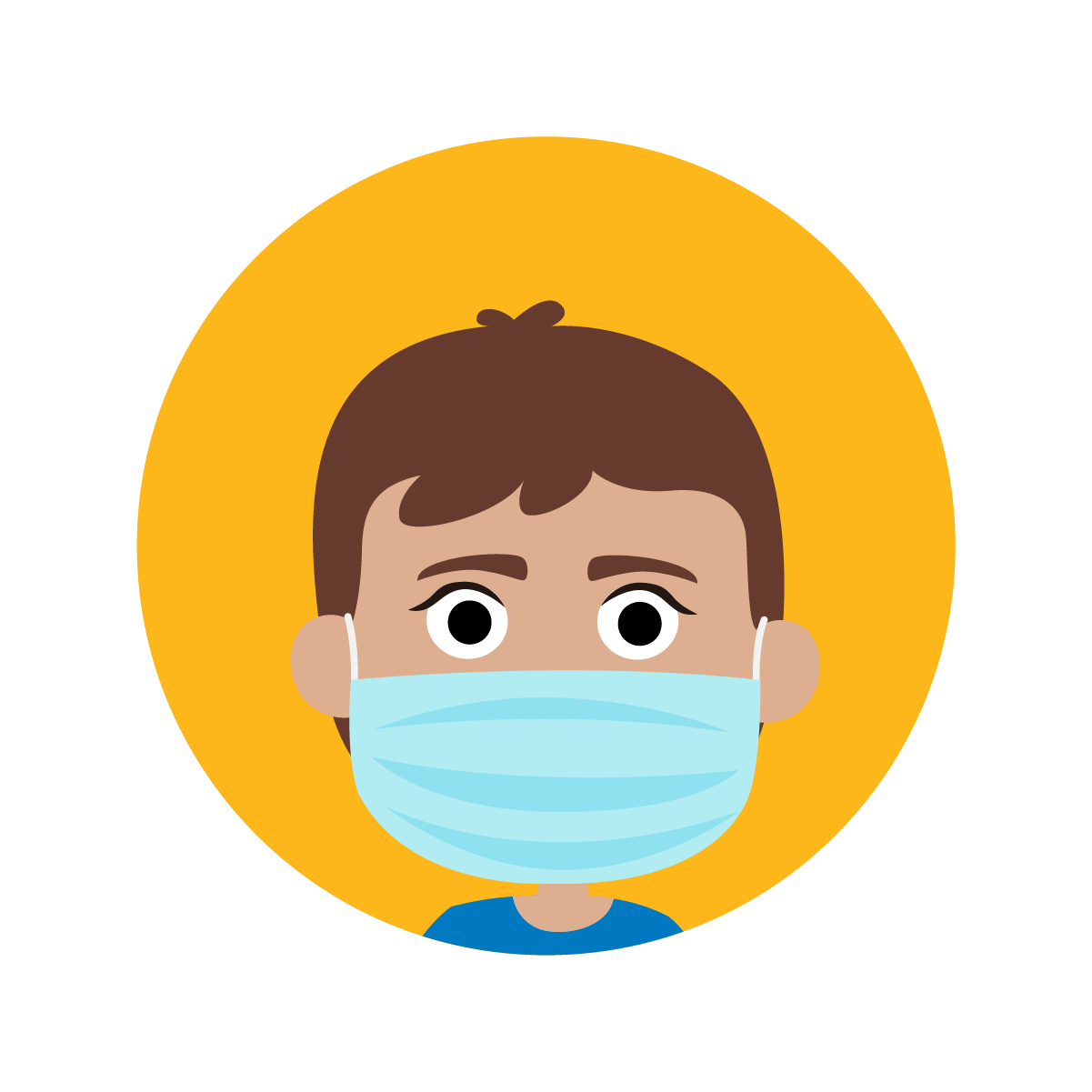 icon where relevant. Please note, face masks should
never be used on babies or children under 2 years of age.
icon where relevant. Please note, face masks should
never be used on babies or children under 2 years of age.
For certain symptoms (e.g., diarrhea, vomiting), special attention to hand washing is recommended. See 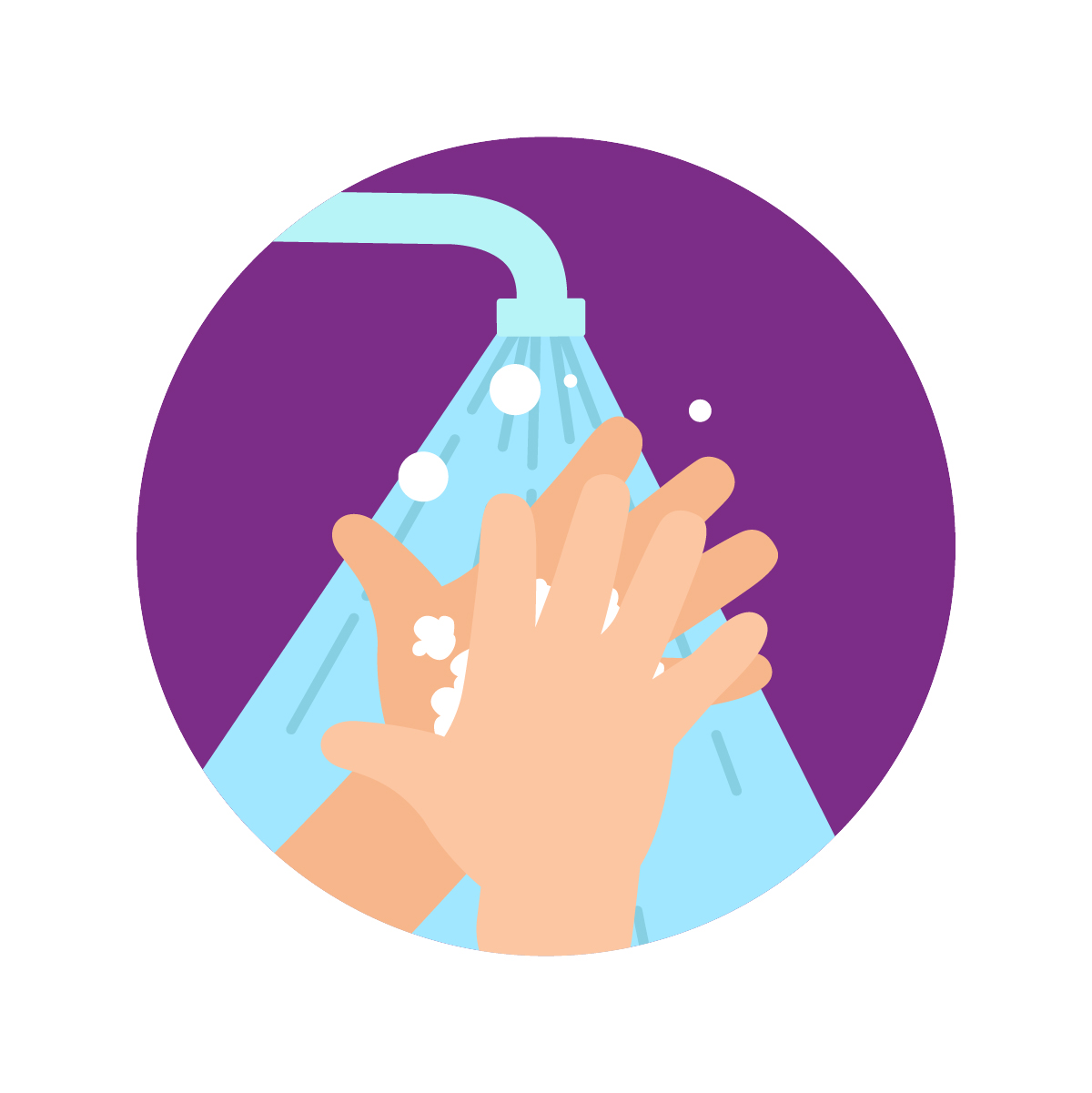 icon where relevant.
icon where relevant.
If a child has been diagnosed with a specific illness or develops compatible symptoms after an exposure to a communicable disease or during an outbreak of a communicable disease, follow instructions for when the child may return to child care or school based on that illness.
Additionally, certain symptoms warrant medical attention, sometimes immediately. See Table 1 and
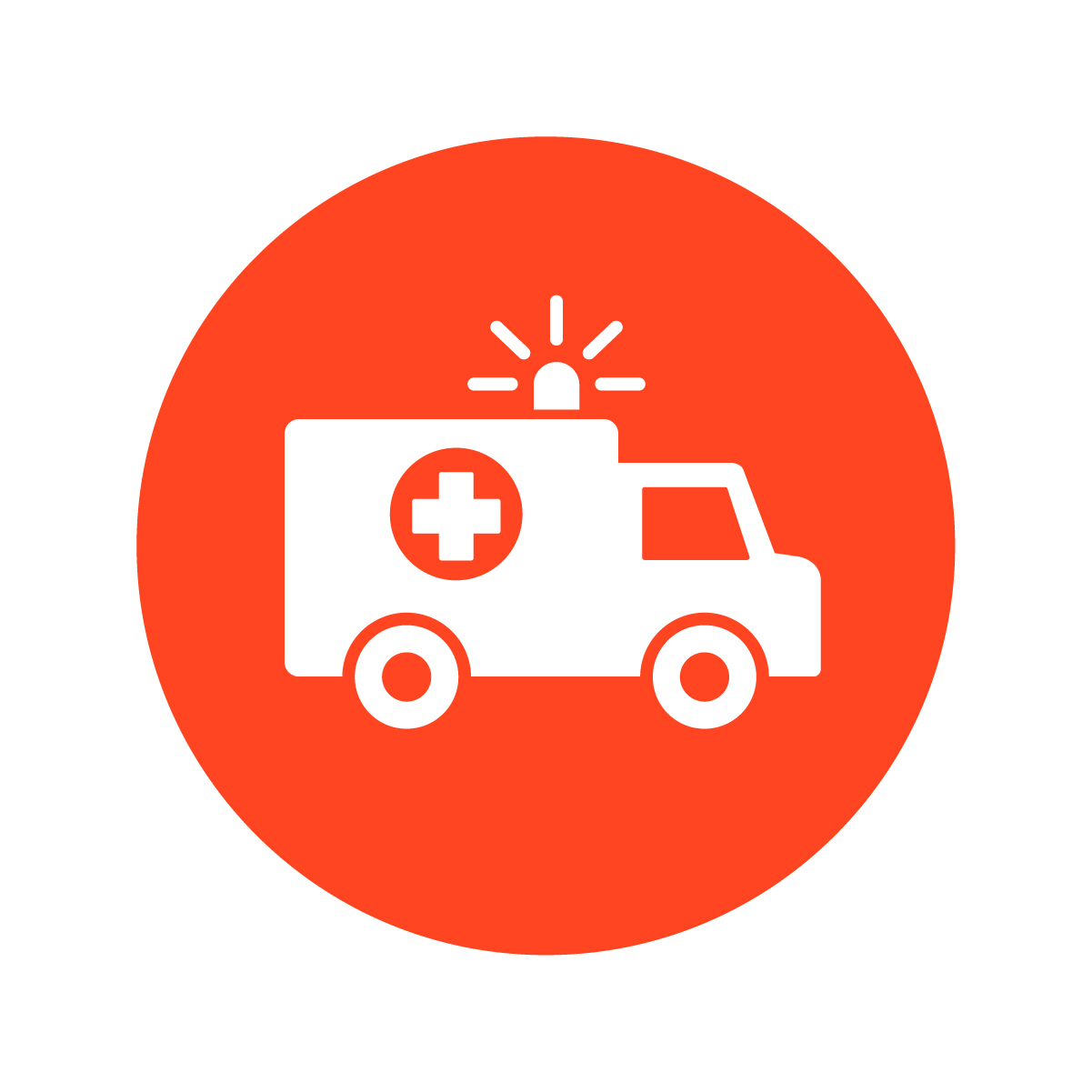 icon in Table 2 for a list. Note that this list is NOT exhaustive , and there may be other situations where the child care or school should seek medical attention for the child.
icon in Table 2 for a list. Note that this list is NOT exhaustive , and there may be other situations where the child care or school should seek medical attention for the child.
A child’s
parent/guardian
should be notified if their child has any of the signs or symptoms in the table below. However, a licensed child care center is required to immediately notify a child’s authorized representative if a child becomes ill.
Abdominal pain/stomachache 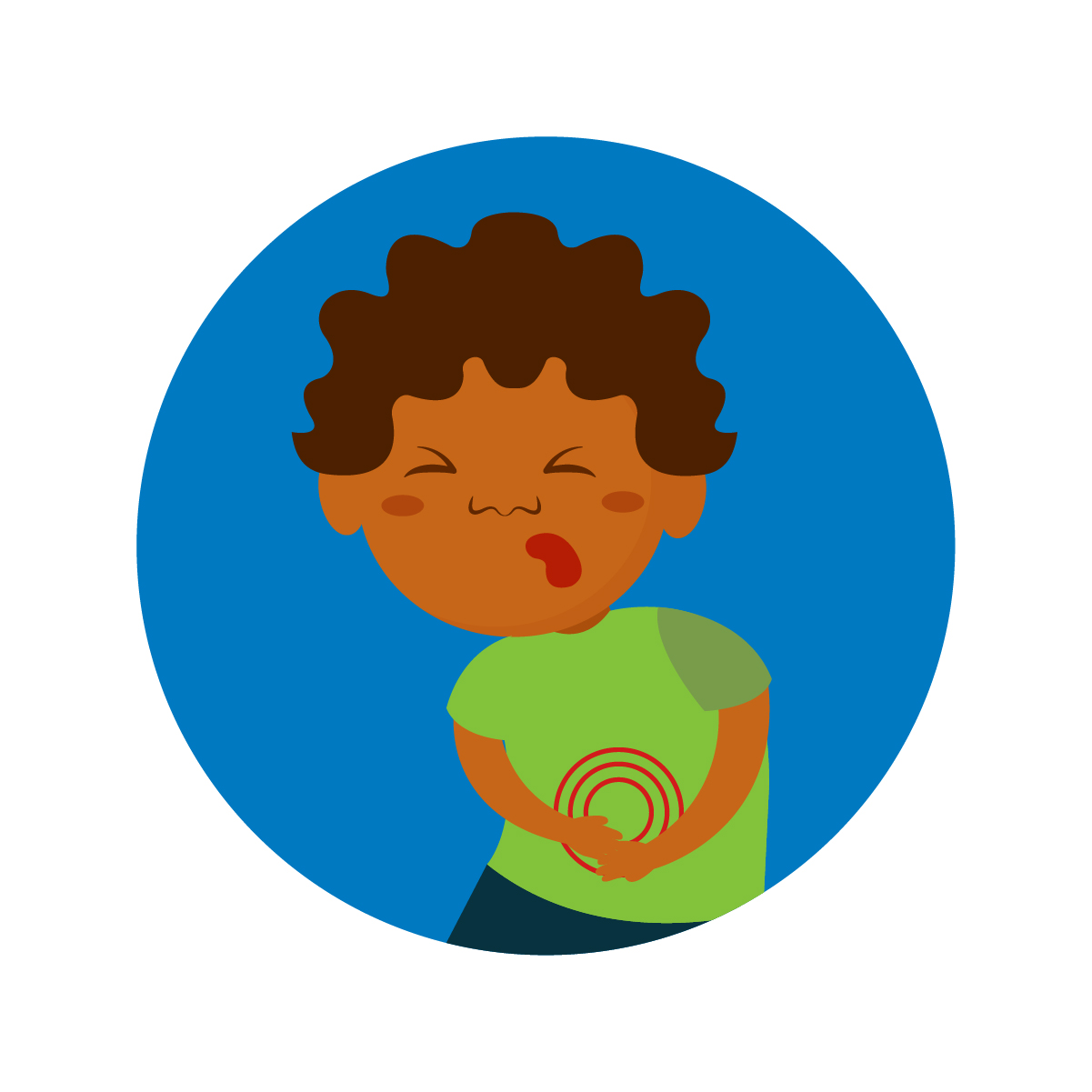
|
Definition: Pain experienced anywhere between the chest and groin; pain may be continuous or may come and go.
May attend
school or child care unless the child has one of the following: - Pain is severe enough that child has difficulty participating in routine activities
- Pain starts after an injury
- Bloody or black stools
- Diarrhea (see Diarrhea)
- Vomiting (see Vomiting)
- No urine for 8 hours (dry diaper, or ask older children if they have urinated since they woke up)
- Fever (see “Fever” for return guidance)
|
Cough and cold symptoms 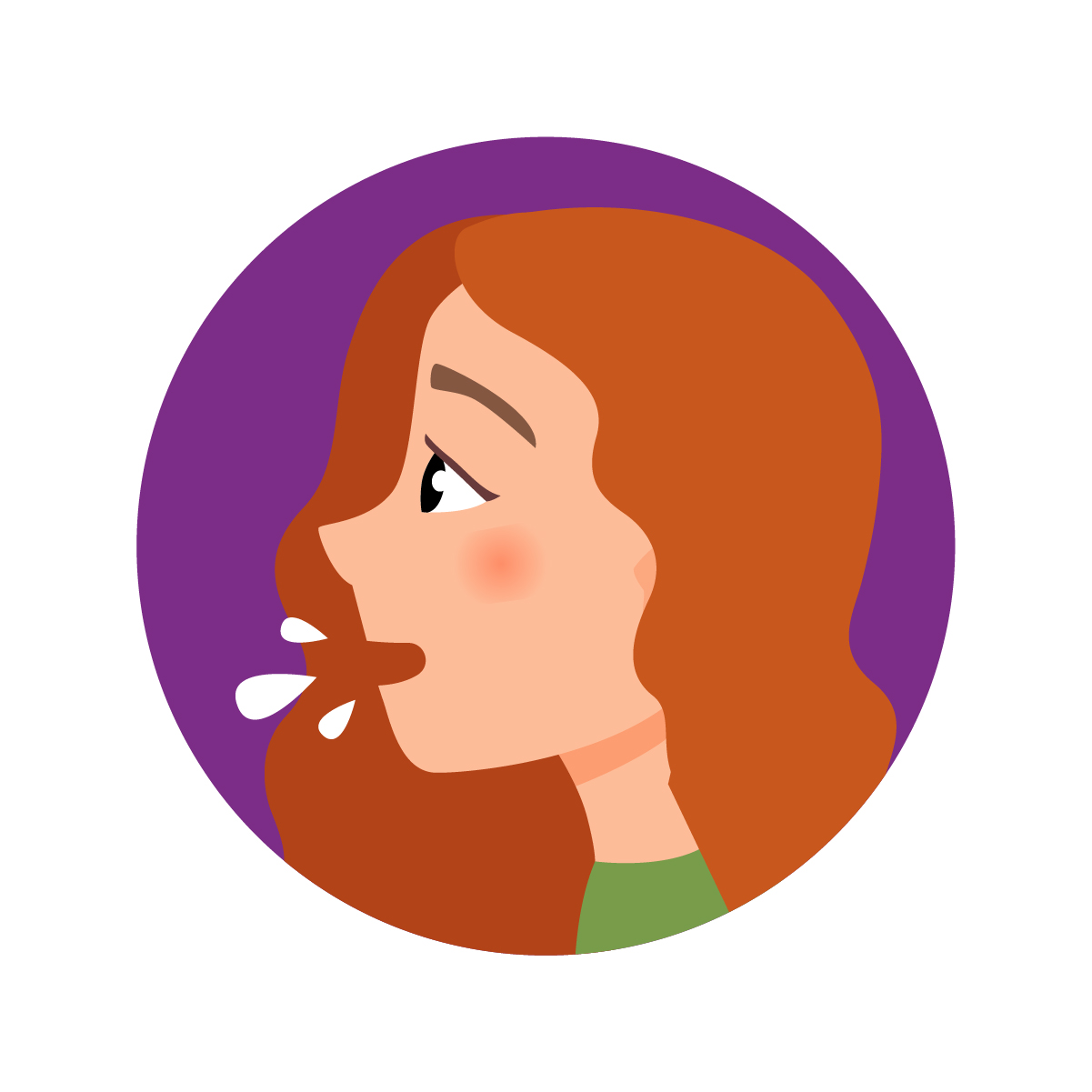

|
Definition: May include runny/stuffy nose, sore throat, sneezing, congestion, body aches, and/or cough, typically lasting up to 7–10 days.
May attend school or child care unless the child has one of the following: - Fever (see “Fever” for return guidance)
- Difficulty with or rapid rate of breathing (see “Difficult or noisy breathing”)
- Cough is severe or child cannot catch breath after coughing
- For a cough suspected to be associated with asthma: coughing that cannot be controlled by the medications that the child care or school has been instructed to use
|
Diarrhea 

|
Definition: Stools that are more frequent (typically at least two more than normal) or less formed than usual for that child AND not associated with a change in diet. Note that young infants may normally have frequent, somewhat watery stools, particularly if breastfed.
May attend* school or child care unless the child has one of the following: - Stool not contained in the diaper or toilet (when toilet-trained)
- Stool looks like it contains blood or mucus, or appears like sticky black tar
- Yellow skin/eyes (jaundice)
- Diarrhea that occurs during an outbreak, and exclusion is recommended by the local health department
*Note: -
If the child has been diagnosed with a specific infection (such as Shigella, Salmonella/typhoid, Shiga toxin-producing E. Coli, norovirus (PDF), etc.), follow the advice of the local health department if they are involved, or the guidance of the child’s health care professional.
-
If there is concern for an outbreak (more persons with diarrhea than would be expected in the setting for that time of year), contact the local health department for guidance.
|
| Difficult or noisy breathing
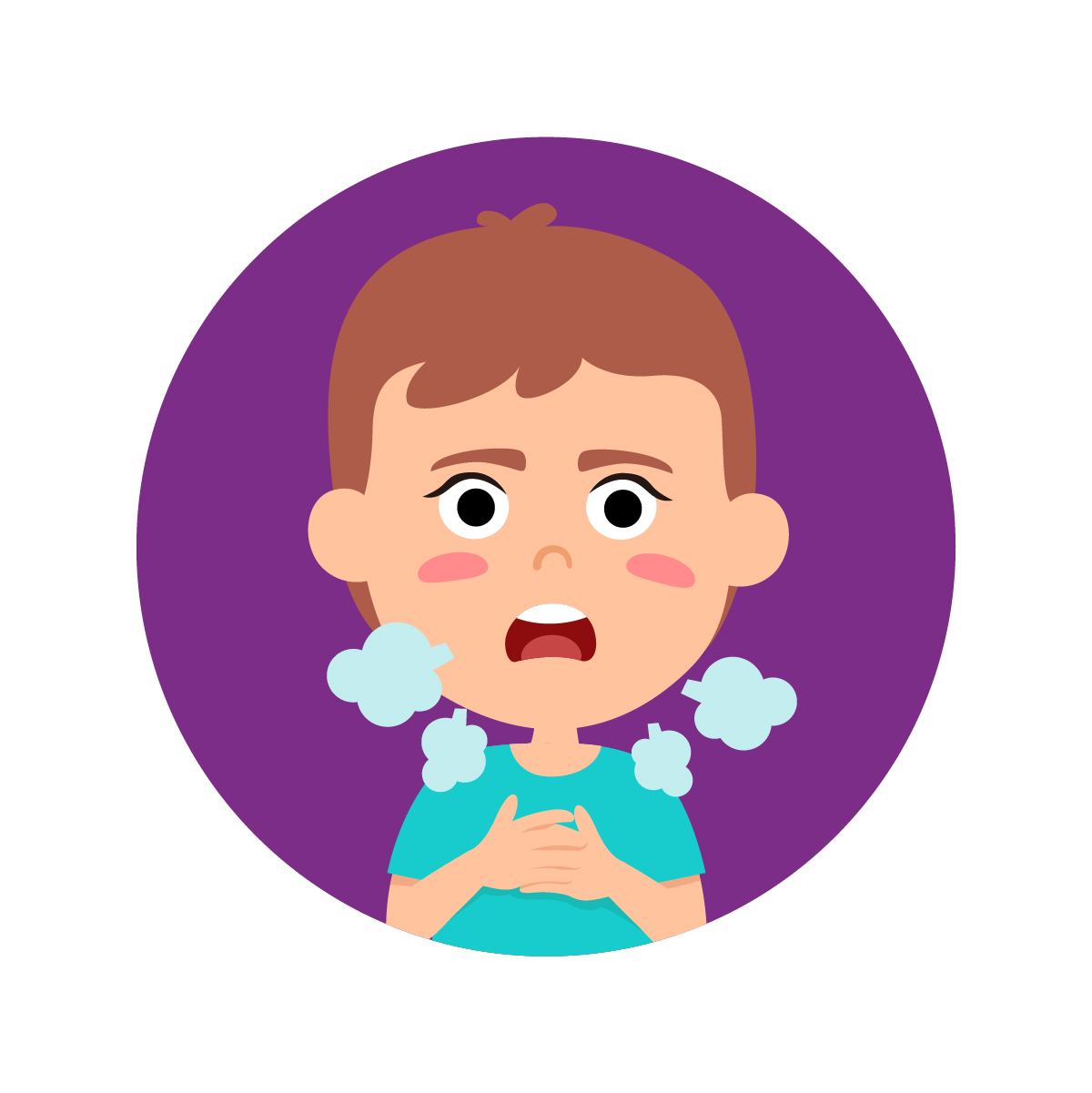

| Definition: Wheezing (high-pitched sounds) that can be heard when a child breathes in or out, chest retractions (see below) OR extra effort is required to breathe.
May attend school or child care unless the child has one of the following: - Wheezing that is new for the child or cannot be controlled by medications the child care/school has been instructed to use for known conditions (e.g., asthma plan)
- Skin or lips seem purple, blue, or grey, depending on skin tone.

- Fever (see “Fever” for return guidance)
- Behavior changes
- Very rapid breathing or increased effort to breathe, such as chest retractions (space between ribs sinks with each breath), belly breathing (belly goes up and down with breathing)
- Breathing problem that causes child to have pursed lips, difficulty speaking, or difficulty feeding
Note: Seek medical attention for new symptoms such as wheezing or breathing difficulties, even if mild.
|
| Earache
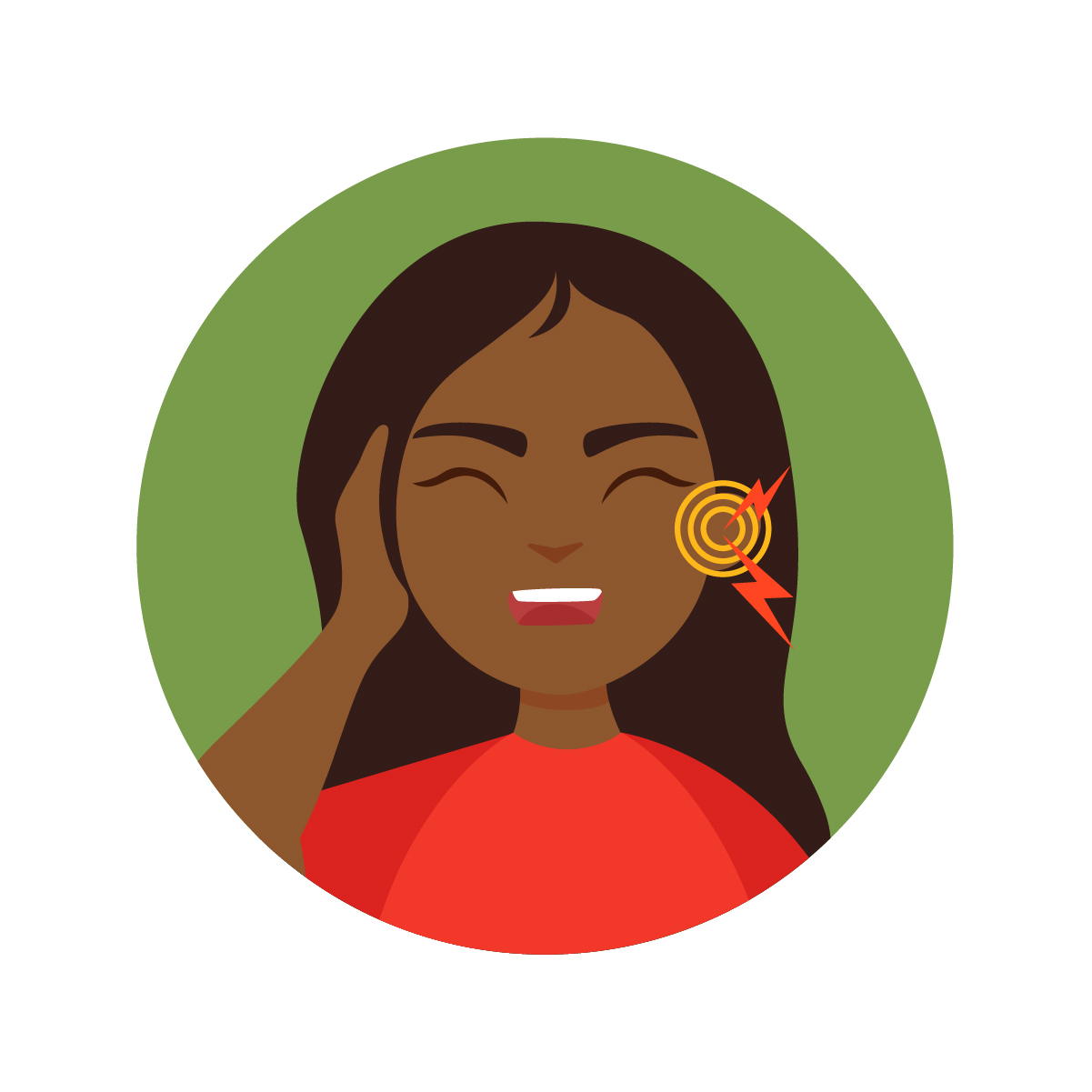
| Definition: Pain (dull, sharp, or burning sensation) experienced inside the ear.
May attend school or child care unless the child has one of the following: - Fever (see “Fever” for return guidance)
- Behavior changes
- Pain prevents participation in routine activities
|
Eye irritation, pink eye, or drainage
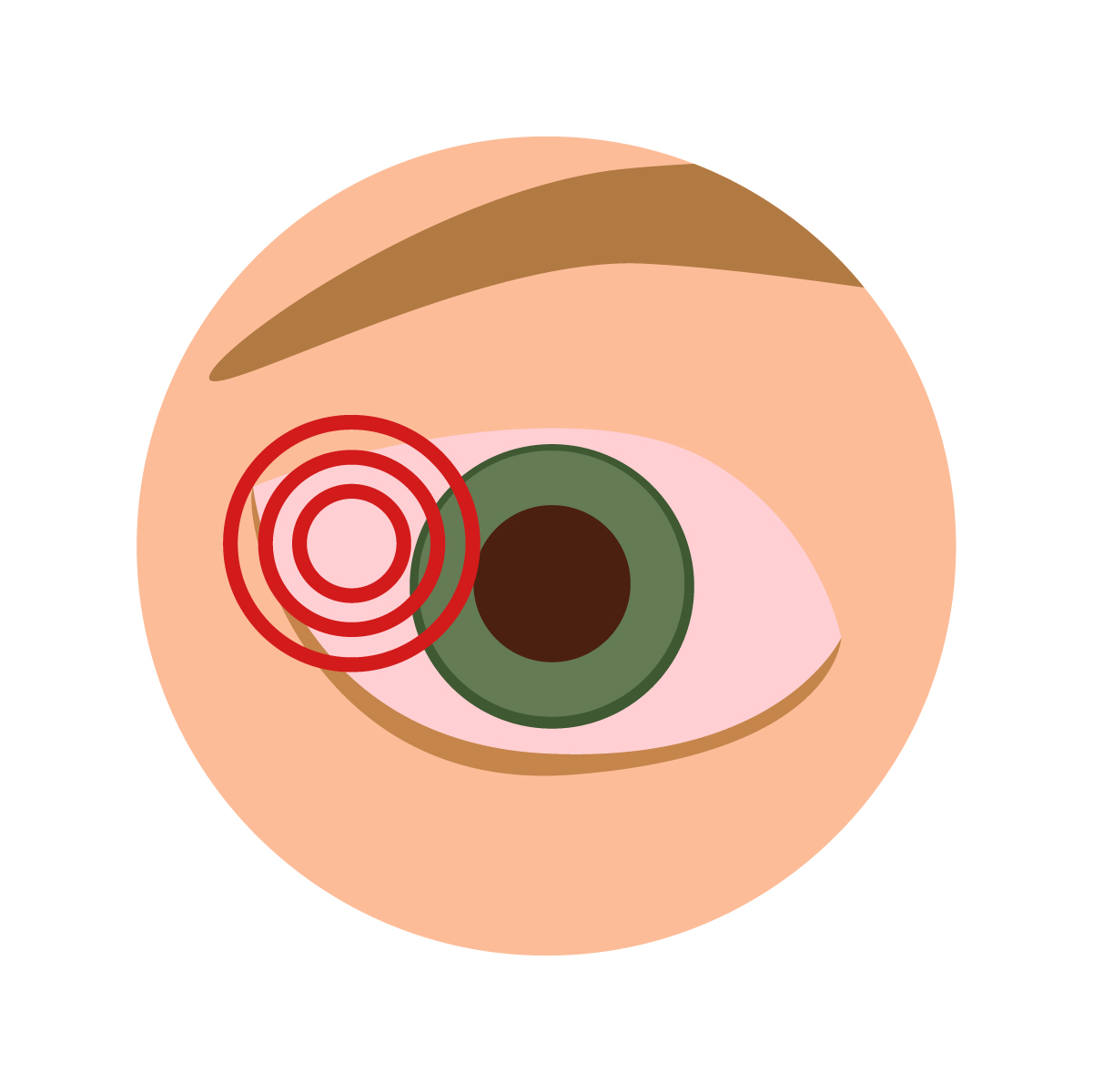

| Definition: Red or pink appearance to the white part of the eyeball. Child’s eye may also be itchy, have crusted/matted eyelashes, more watering than normal, or yellow/white drainage.
May attend school or child care unless the child has one of the following: - Problems seeing (vision changes)
- An injury to the eye involving forceful impact to or penetration of the eye
- Pain or discomfort the child cannot tolerate
Note: Pink eye (i.e., conjunctivitis) is inflammation of a layer that covers much of the eyeball. It is most often caused by a virus, and children with viral pink eye typically get better after 5-6 days without antibiotics. Staying home from school or child care is not necessary. Frequent hand washing should be encouraged. Eye irritation can also result from allergies or chemical exposures (e.g., air pollution, smoke, or swimming in chlorinated pool water). |
| Fever
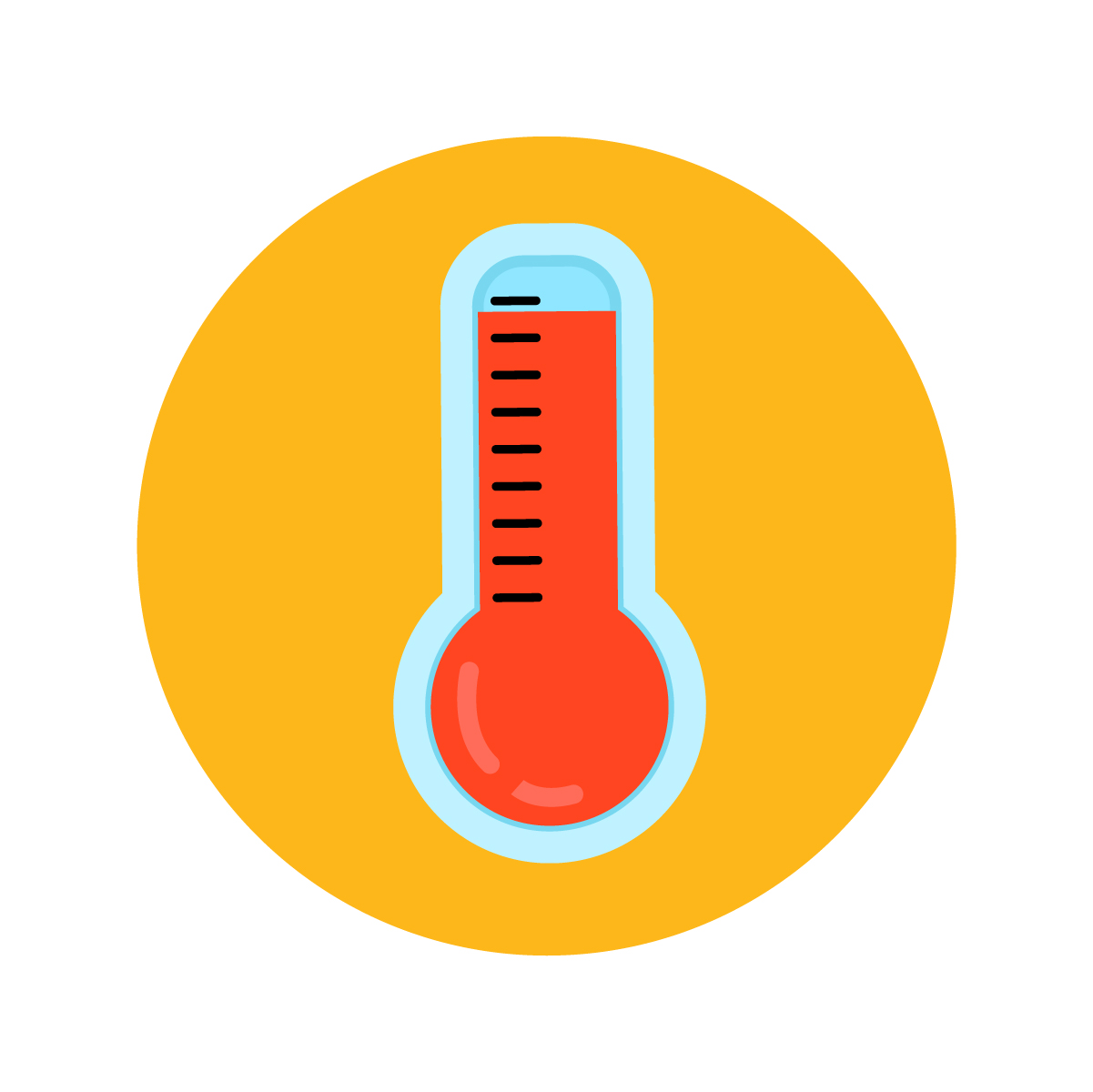
| Definition: An oral (under the tongue), temporal (forehead), rectal, or axillary (underarm) temperature above 100.4°F (38°C). Axillary (underarm) measurements should be used only if other options are not available. Follow instructions for the specific thermometer, including directions for use, cleaning and covers (if applicable). If a temperature is close to 100.4°F, repeat to confirm the result.
It is ONLY recommended to take a child’s temperature if the child seems ill, feels hot, or has other symptoms or signs of illness. Checking the temperature of a child or group of children to allow entry (also known as screening) is NOT recommended in school or child care settings.
Unless otherwise directed by a healthcare provider, a child with another symptom or sign of illness who also has a fever should NOT attend school or child care.
Return when: - Fever went away in the night – without using fever reducing medications, e.g., Tylenol®, Advil®, Motrin® (acetaminophen or ibuprofen) - and is still gone in the morning; AND
- Other symptoms are improving and the child can participate comfortably in routine activities.
|
| Headache, stiff or painful neck
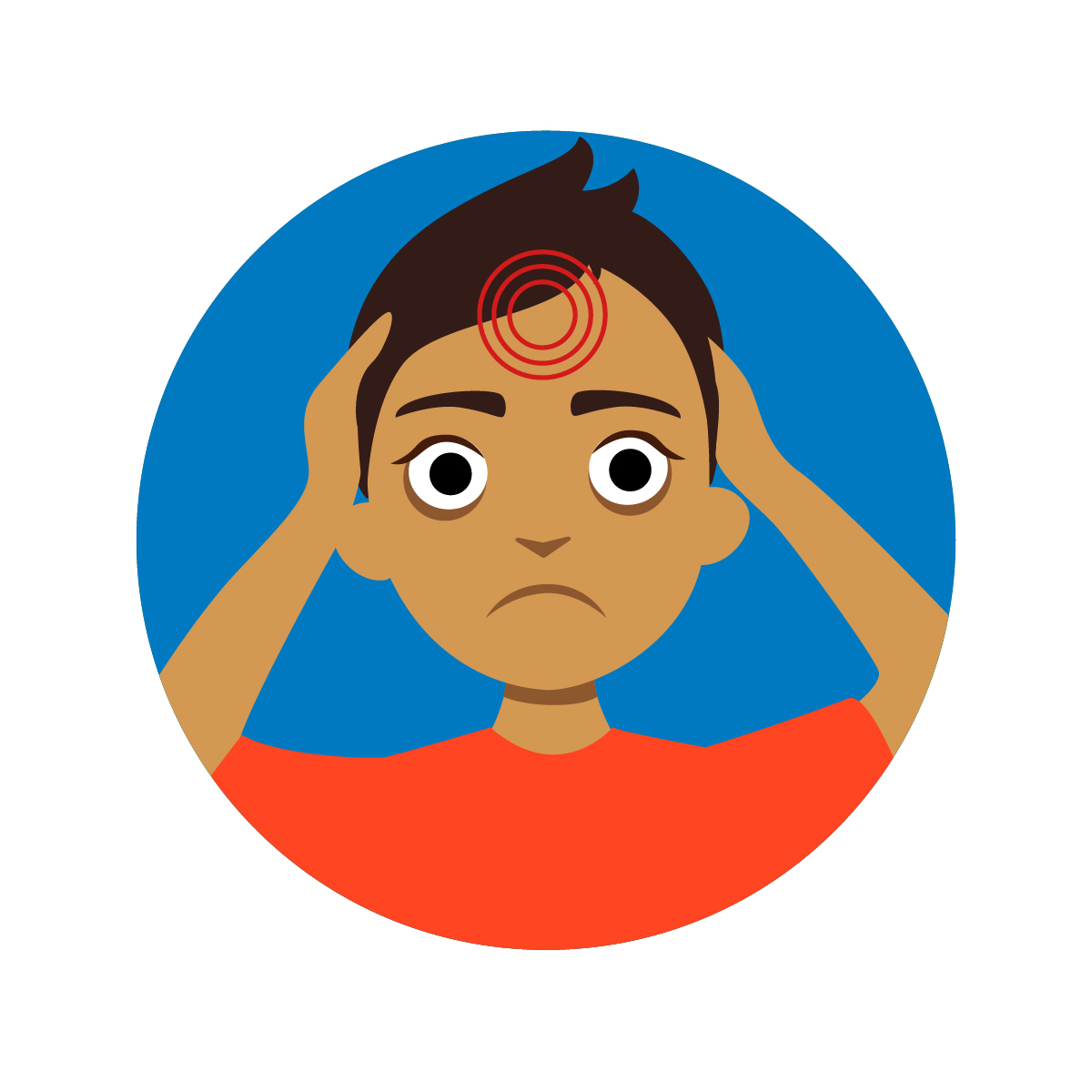
|
Definition: Pain experienced in any part of the head ranging from sharp to dull; may occur along with other symptoms.
May attend school or child care unless the child has one of the following: -
Concussion symptoms: Pain occurs after a fall or other injury to the head and is severe or associated with vomiting, vision changes, behavior change, or confusion.
-
Possible infection: Stiff neck, headache and fever can be symptoms of meningitis a potentially serious infection. Meningitis can also cause sensitivity to light, vomiting, and/or confusion. A stiff neck is most concerning if the child can’t look at their belly button (putting chin to chest) due to pain or the BACK of the neck is painful (not soreness in the sides) along with the other symptoms above.
Get immediate medical attention for either of the above conditions. 
|
| Rash or itching
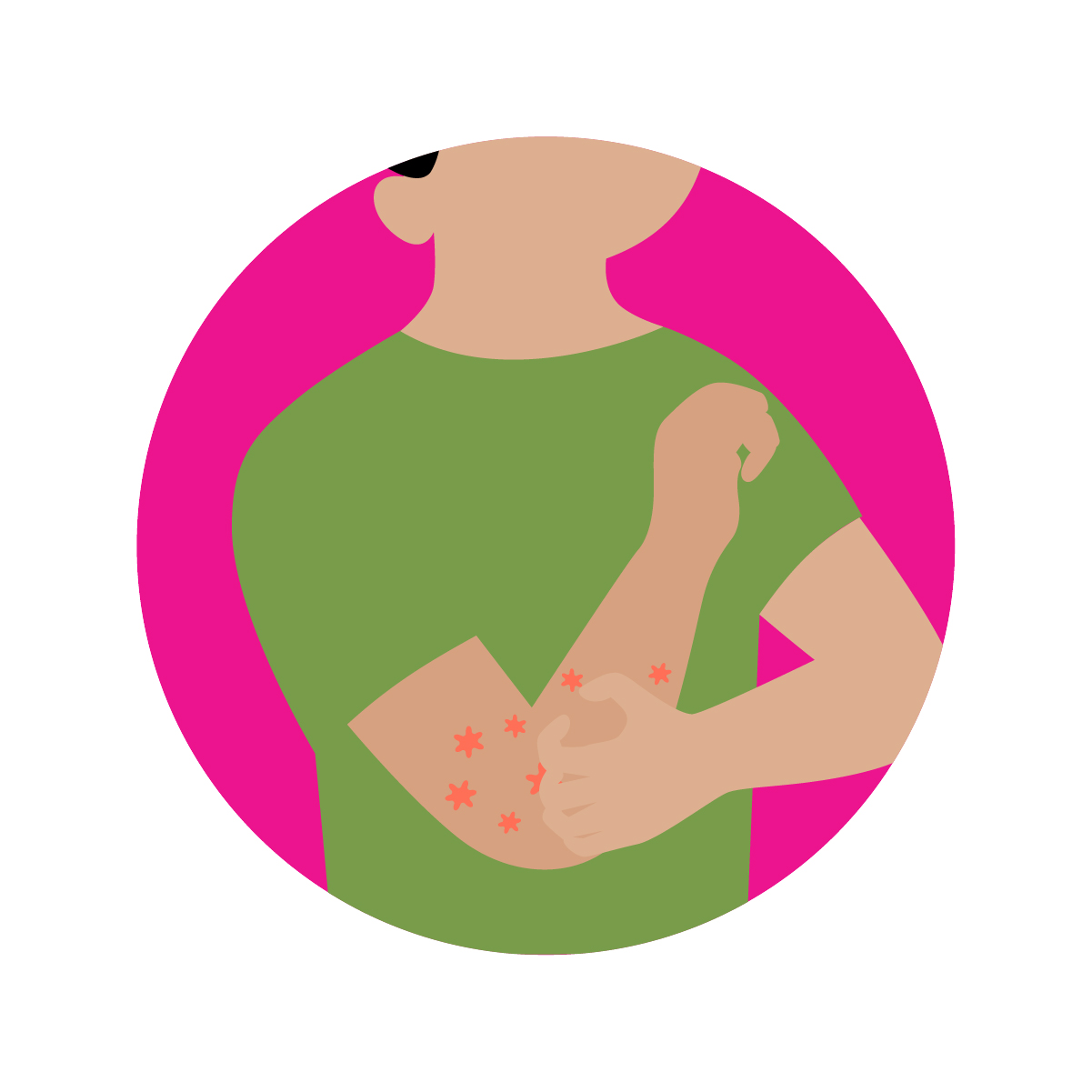
| Definition: An area of the skin that has changes in color or texture and may look inflamed or irritated. The skin may be darker than or lighter than normal or red or purple. It may be, warm, scaly, bumpy, dry, itchy, swollen, or painful. It may also crack or blister.
May attend school or child care unless the child has one of the following: - Oozing, open wound or infection that cannot be covered and is in an area that might come in contact with others.
- Skin that looks bruised without a known injury or in an unusual location.
- Rapidly spreading dark red or purple rash (may indicate a rare but severe bacterial infection; usually accompanied by fever).
- Tender, red area of skin, rapidly increasing in size or tenderness.
- Associated symptoms of a serious allergic reaction (rash with throat closing, abdominal pain, vomiting, or wheezing).

- Fever (see Fever for return guidance)
- There is concern for a disease like chickenpox or measles. If this is the case, the child should see a healthcare provider and the local health department should be contacted.
Note: For diagnosed conditions, follow the advice of the healthcare provider. In general, for conditions such as lice, impetigo, ringworm, scabies, and pinworms, no waiting period is typically necessary after starting treatment and the child may return after the appropriate treatment is started. |
| Sore throat (pharyngitis) and/or mouth sores
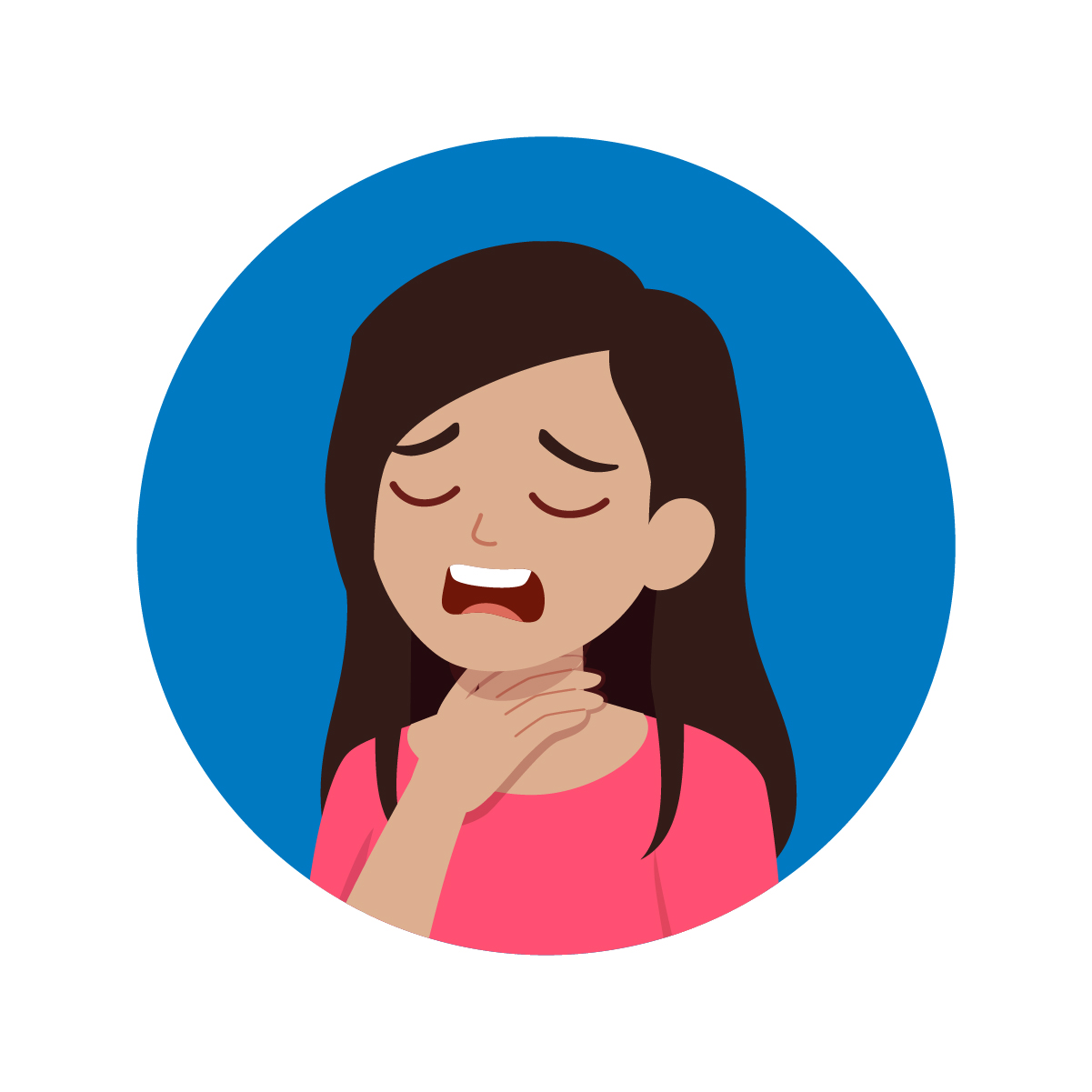

| Definition: Sore throat includes pain or irritation of the throat often resulting from a viral or bacterial infection (e.g., cold, flu, strep throat). May feel worse when swallowing. Mouth sores include white patches on the tongue, gums and/or inner cheeks (oral thrush/yeast infection); white/red spots in the mouth, blisters on lips or inside mouth; or painful ulcers inside cheeks or on gums (canker sores).
May attend school or child care unless the child has one of the following: - Inability to swallow
- Fever (see “Fever” for return guidance)
- Breathing difficulties
- Excessive drooling or muffled voice

Note: Most children with sore throat have viral infections. Children younger than 3 years of age usually do not have strep throat. If a child is diagnosed with strep throat, they should receive antibiotics for at least 12 hours before returning.
|
Vomiting
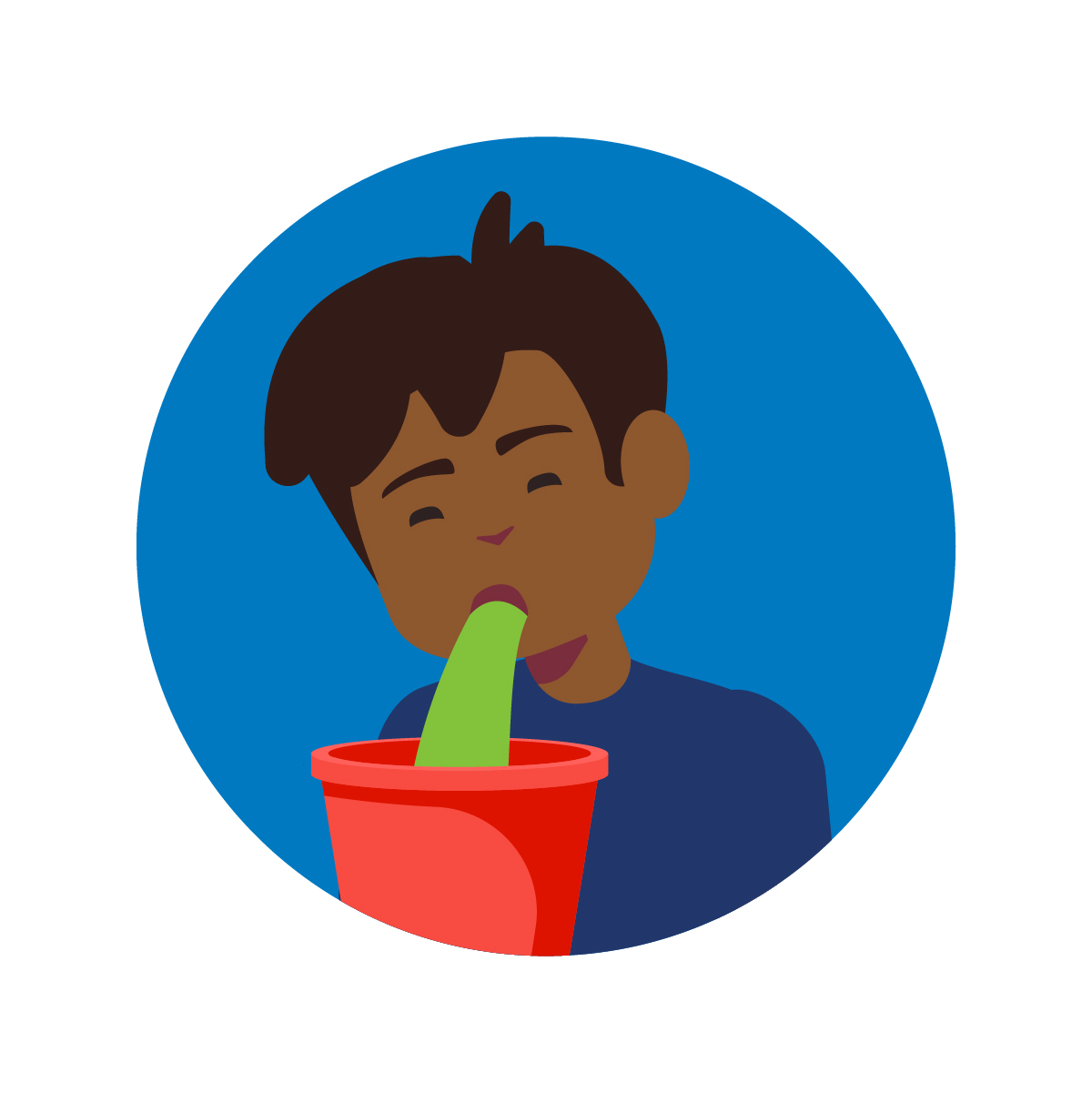

|
Definition: Forceful expelling of stomach contents out of the mouth 2 times or more in 24 hours.
Note: Not all vomiting is due to an infection and other causes (e.g., spit-up in a healthy infant with reflux, motion sickness, overeating) should be considered.
May attend school or child care unless the child has one of the following: - Vomiting has occurred 2 or more times in 24 hours.
- Fever (see “Fever” for return guidance).
- Concern for a serious allergic reaction, such as hives appearing with vomiting.

- Vomit appears green or bloody

- Child has not urinated in the past 8 hours (i.e., has dry diapers, or ask older children).
- Recent head injury.
- Looks or acts very ill.
Return when:
- Vomiting ended during the night and child is able to hold down food or liquids in the morning.
Note: If there is concern for an outbreak (more persons with vomiting than would be expected in the setting for that time of year), contact the local health department as norovirus (PDF) should be suspected and children should not return until 48 hours after symptoms have resolved. |
Contact information for local health departments throughout California:
The following contains a selection of disease-specific resources. Please note this is not comprehensive and included for ease of reference only.
The following contains a selection of relevant California regulations. Please note this is not comprehensive and included for ease of reference only:
- California Code of Regulations.
The following contains a selection of related guidance from other organizations. Please note that California’s guidance may differ from the references below.
-
Annex A: School Template Letter for Sending Symptomatic Child/Student Home (Word)
- Other Languages:
[Spanish],
[Arabic],
[Armenian],
[Chinese-Simplified],
[Chinese-Traditional],
[Hmong],
[Khmer],
[Korean],
[Punjabi],
[Russian],
[Tagalog],
[Tahi],
[Vietnamese]
-
Annex B: Two-Page Summary - When to Keep Your Child Home From School or Child Care (PDF)
- Other Languages: [Spanish],
[Arabic],
[Armenian],
[Chinese-Simplified],
[Chinese-Traditional],
[Hmong],
[Khmer],
[Korean],
[Punjabi],
[Russian],
[Tagalog],
[Tahi],
[Vietnamese]